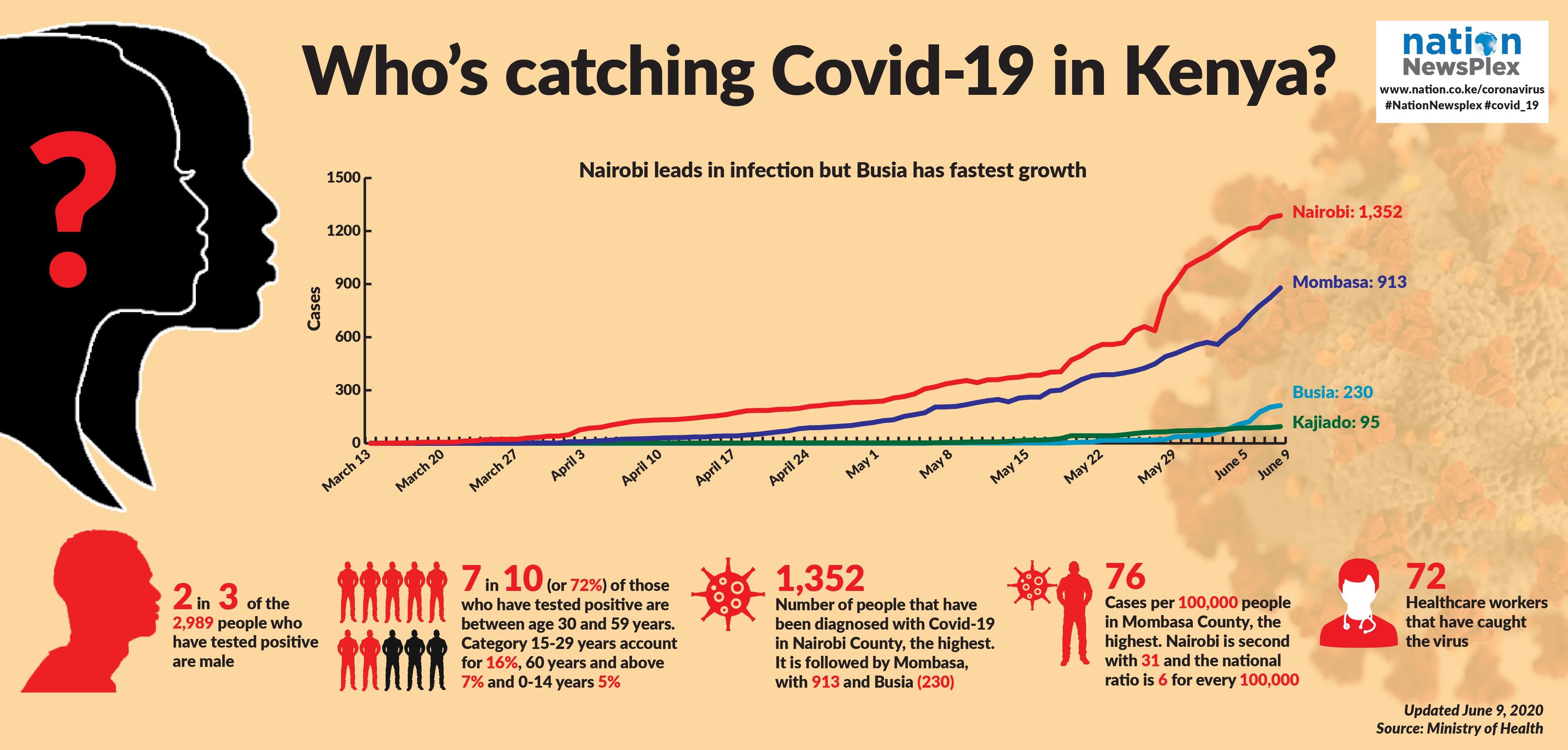Premium
Family, friends most likely to kidnap, reveals survey of 20 counties
GRAPHIC | LISA WAMUGUNDA
The events of February 24 are still fresh in Isaac Swila’s mind, nine months later. Swila, a journalist, had been kidnapped in broad daylight on a Saturday, along Nairobi’s Kasarani-Mwiki road while in the company of his cousin, Oliver Ogutu, who has since died.
“I do not want fear to subdue me. I am sharing this so that in future someone should not fall prey to this,” he said.
According to the 2017 Economic Survey, of the 55 people who accused of abductions in 2016, only three were women.
Swila is not just a statistic. He is one of the people who fall prey to abductions by total strangers. According to the 2017 Emerging Crimes: The Case of Kidnappings in Kenya report, 914 people who were surveyed knew of someone who had been abducted by strangers. However, this were fewer compared to the 989 who had heard of cases of kidnapping by an acquaintance or family member.
On the ill-fated day, Swila and his cousin left his Kasarani home to withdraw some cash at a bank. They chose to do it over the counter. It was around 11.40am. The bank was filled with customers. Swila thought that other customers were engaged in their own business, just as he was. But he now says this was the big mistake that set the stage for his ordeal.
An hour later, the two were walking home, carrying the cash, when they were suddenly stopped by a Toyota saloon car with four men inside posing as police officers. As a rule, men make up the vast majority of kidnappers. According to the 2017 Economic Survey, of the 55 people who accused of abductions in 2016, only three were women.
In Swila’s case, the attackers were aged between 30 and 50. They ordered them into the car under the guise of taking them to the nearby police station for questioning, having accused the two of being thugs. The captives were sandwiched between two of the abductors in the back seat, the tinted windows rolled up.
Swila realised something was amiss when the car sped past the police station.
In no time, the attackers snatched the bag with the cash and demanded Swila’s ATM PIN. He tried to resist but he was tortured and strangled. The assault left him bleeding profusely. At this point, the captors were kind enough to give him tissue paper to wipe away the blood, but also cruel enough to plant four bullets in his pocket and put a pistol close to his skin.
“Na uko na mwili mzuri ya risasi. Mtajua maisha yenyu inaisha leo (You have a good body to take a bullet. You will know that your life ends today),” he recalls being told.
Suddenly the vehicle stopped. They were asked to get out and run without looking over their shoulders. This, it turned out, was a calculated move to prevent them from capturing the vehicle’s number plate. They had been dumped way past Kamiti Maximum Security Prison.
Despite being warned by their captors and told not to report the ordeal, sharing it with friends or having it published, they still decided to walk into a police station to report the case. However, the police officers were reluctant to record the incident. The only reasonable thing for them to do was to leave. To date,
Swila believes their kidnappers were either rogue officers, insiders from the bank or customers with an ulterior motive.
Respondents in Nairobi, where Swila and Ogutu were kidnapped, reported having heard of the highest number of kidnapping incidents, at 86 responses. Turkana was second at 78 and Kirinyaga third with 76 respondents saying they had heard about a kidnapping. Mandera (72) and Machakos (69) were fourth and fifth respectively, followed by Murang’a (60), Nyeri (58), Wajir (51) and Nakuru (50). Baringo, Bungoma and Laikipia counties had the fewest number of people admitting that they knew someone who had been kidnapped in their area, at 21, 22 and 32, respectively.
A relative
Nairobi had the most respondents saying they knew of cases of people being kidnapped by an acquaintance or relative, with a total of 123 responses. Kirinyaga and Nyeri followed closely with 115 and 99 responses respectively. The fewest responses were recorded in Kwale and Bungoma (19 each), Wajir (17) and Baringo (16).
Kidnappings by an acquaintance mostly occurred in Nairobi, Kirinyaga, Machakos, Nyeri, Murang’a and Turkana. Lamu, Laikipia, Siaya, West Pokot, Kwale, Wajir and Baringo — all had below 20 responses —the fewest in that order.
Nairobi also led in respondents who said they knew of kidnappings committed by family members, with 53 responses in the said period.
Most of the people surveyed said that ATMs were the most common locations where one most risked being kidnapped at. A total of 545 responses reported hearing of kidnapping cases at ATMs.
In, Nairobi 80 respondents reported hearing of an incident of kidnapping near an ATM machine. They were followed by respondents in Nyeri and Kirinyaga (62), Machakos (59), Murang’a (47) and Nakuru (42). Migori had only one such reply, while both Lamu and Kwale had six.
Virtual kidnappings
The report also revealed an emerging, worrying trend of virtual kidnappings. While all other types of kidnapping usually involve an immediate abduction, virtual kidnapping usually involves an extortion scheme, tricks that are less likely to be discovered at first, or even use of technology to trick people.
Criminals act with speed and cause panic, making the victim act fast. Such criminals may make phone calls to parents and demand money to take care of a situation that involves their children.
Nairobi led with such cases at 65 responses, followed by Nyeri (46), Kirinyaga (43), Mandera (33) and Murang’a (31).
The report recommended that there should be enhanced confidence and trust levels between security agencies and the public, vetting of police officers as well as former security agents. Intensified community policing and creating public awareness with regards to this crime was also recommended as a strategy to curb kidnappings.





